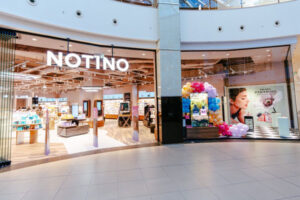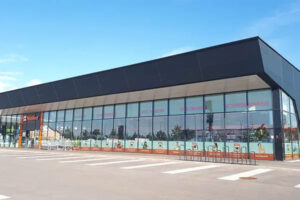Wikipedia defines PropTech as: “the application of information technology and platform economics to real estate markets”. While many associate PropTech with technology that supports Smart Buildings, at Placewise, we define PropTech as any technology that supports physical real estate. Today, PropTech for retail real estate is pushing beyond the generally accepted boundaries of the past, opening up countless opportunities for shopping centers to redefine the economic fundamentals of the industry while simultaneously providing shoppers with the convenience and personally tailored experiences they need and want.
The demand for PropTech from retail real estate has seen a significant increase during the COVID-19 pandemic. Technology has provided hope and solutions at a time in which traditional shopping is being further challenged, and this is a starting point from which the role of the shopping center can be reimagined and the digital foundation that is necessary for its future health can be built.
We have seen a heightened level of interest from the industry over the last six months in three main areas:
1. Crowd Management – Socially Distanced Shopping, Shopping by Appointment
2. E-commerce – Digital Sales and Fulfillment, Click & Collect, Curbside Pick-Up
3. Tenant Relationships – Communication, Engagement, Support
Crowd Management
Whether imposed by the government or driven by socially responsible real estate owners, intentionally discouraging crowds obviously runs counter to the norm for retail destinations (except for ultra-luxury brands). Therefore, technology as a whole must meet the demands of social distancing while applying a level of logic that maximizes the total footfall potential. During the early stages of the pandemic, we were involved in projects that had development timelines that were counted in days. Simply put, the objective was speed of delivery, and minimal viable product solutions were sub-optimal by default. Short deadlines go hand in hand with a lot of creativity as well as some healthy cycles of trials, failures, and iterations. In fact, early-stage solutions created bottlenecks that forced people to have to stand in line, and standing in line is not conducive to social distancing.
Advanced footfall counters, heat maps from Wi-Fi routers, etc. have existed for a long time. The problem, however, is that no solution in place captures anything close to 100% of individuals on an identified basis. At best, they give indications of crowds on a timeline (normally, not in real time), but provide no opportunity to manage crowds with a high level of accuracy. As a substitute, several have ended up running their malls as events; shoppers sign up specific timeslots in order to visit.
The ideal crowd management system for malls will provide shoppers with a more dynamic and engaging shopping experience. Imagine that everyone who visits your mall now has to use an app, which is usually not an ideal requirement for a shopper, but may be necessary given the current circumstances. The app provides live visualizations of crowds and counts up to the maximum number of visitors for certain areas of the center. This feature could be combined with tenant promotions and gamification aspects vis-à-vis buyers, all of which point out the periods of time when a higher visitor density is possible. Meanwhile, such a system would simultaneously enable centers to build amazing consumer databases.
E-commerce
The second area in which we are active and which is of great interest to some of the industry’s leading shopping center operators is mall-enabled e-commerce. How are shopping centers involved in this area and what is the value proposition for tenants and shoppers? Having some kind of e-commerce offering on behalf of a shopping center is the difference between being in business in certain and recently experienced situations and not being in business at all. Placewise, for example, is now involved in a project for a major new development in Europe, in which the goal is that all products in the mall, across all tenants, can be searched for and sold via the mall’s digital channels. The products are offered for pickup at the mall or for home delivery.
From a PropTech perspective, the challenges of this endeavor relate more to data access and quality and operational processes than to technology. However, new technology components still need to be developed to enable an end-to-end solution. The high-level areas that need to be covered from a processing and customer journey perspective are: product data from the tenant, inventory data from the tenant at the location level, storefront, shopping cart, payment, fulfillment (pickup and home delivery), services for returns and settlement between shopping center and tenant (depending on the chosen business model). All in all, these are complex matters that are typically resolved by a handful of partnering companies.
As an entry point into e-commerce, we believe that a robust digital consumer database should be a top priority. Without a digital consumer database, a mall would have to spend a substantial amount of marketing funds to drive traffic and generate a significant volume of online purchases. As digital consumer databases typically reach between 10% and 50% of unique annual physical visitors and beyond, each shopping center would have as strong a value proposition vis-à-vis tenants in the digital space as those with physical stores: We can provide digital shoppers to our tenants just as we provide physical shoppers at the shopping centers.
If everything is done in the right way, we believe that a healthy 3-year target is that a shopping center should generate 10% to 20% of total sales from online sales. If that is achieved, your positioning for the next 10 to 20 years will be assured.
Tenant Relationships
Connecting shoppers to their favorite brands and retailers is the core of a shopping center’s business. However, perhaps equally fundamental is the relationship between the landlord and the tenant. COVID-19 has highlighted the need for retail real estate owners and management companies to strengthen their relationships with their tenants and provide more efficient communication solutions.
Whether during a crisis or under normal operating conditions, streamlining the operational back and forth between tenants and center management, such as forms, permits, waivers, repair requests, meeting schedules, security alerts, or even financial reporting ensures more accurate and timely information for buyers.
Just as the scope of our definition of PropTech is expanding, so are the ways in which PropTech can unlock future potential for shopping center owners. Shopping behavior during the pandemic has given us a glimpse into the future. It is not so much a crystal ball or a map, but rather a compass that can lead us in the right direction. It is a more holistic shopping experience for consumers that is less about “channels”, in other words, online versus physical shopping, and more about the ability to choose the details of purchase and fulfillment. For shopping centers, it is about connecting with shoppers, “owning” the relationship, and harnessing the financial potential of monetization beyond the square meter.
Here’s to a future supported by PropTech!






